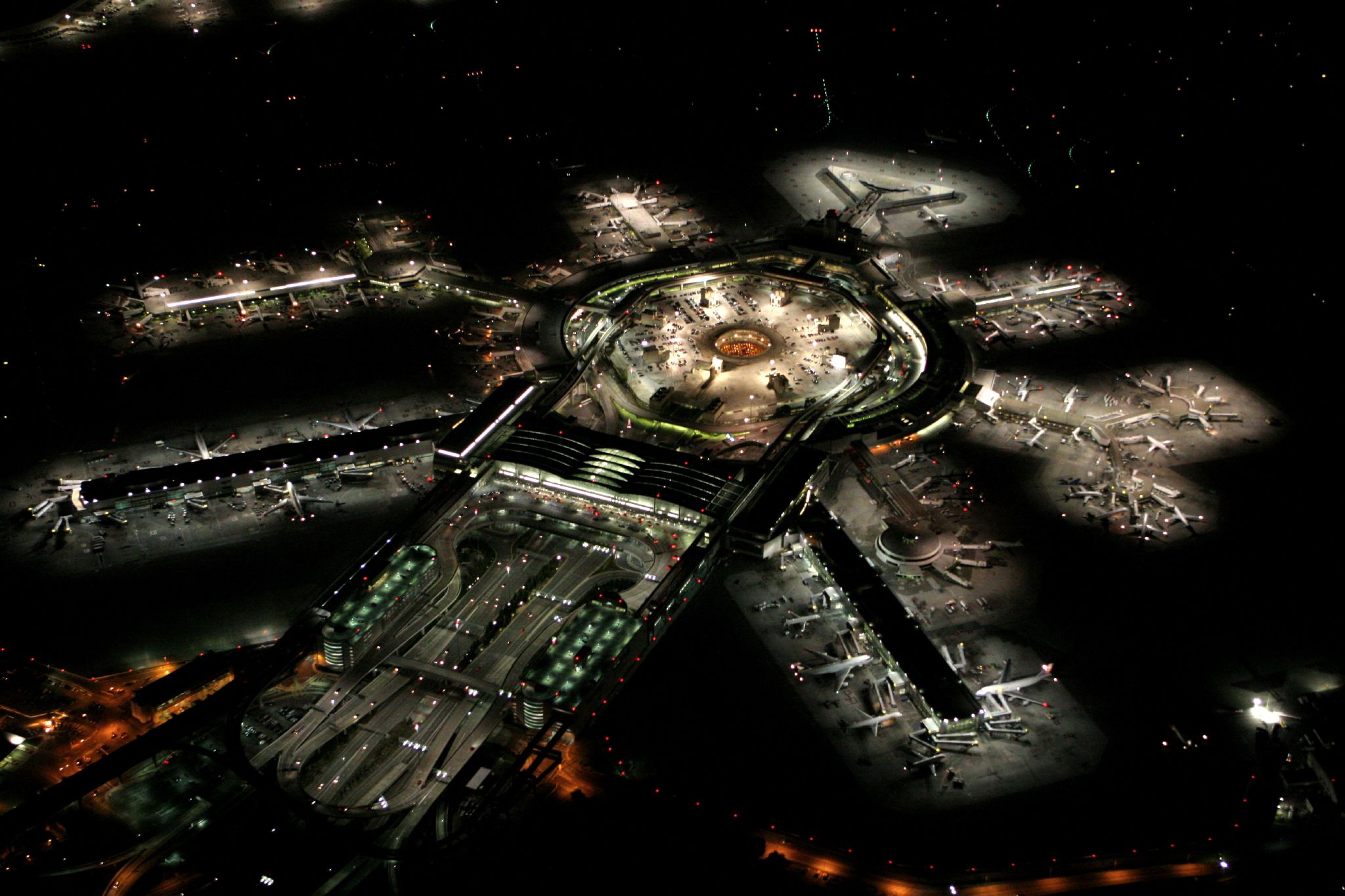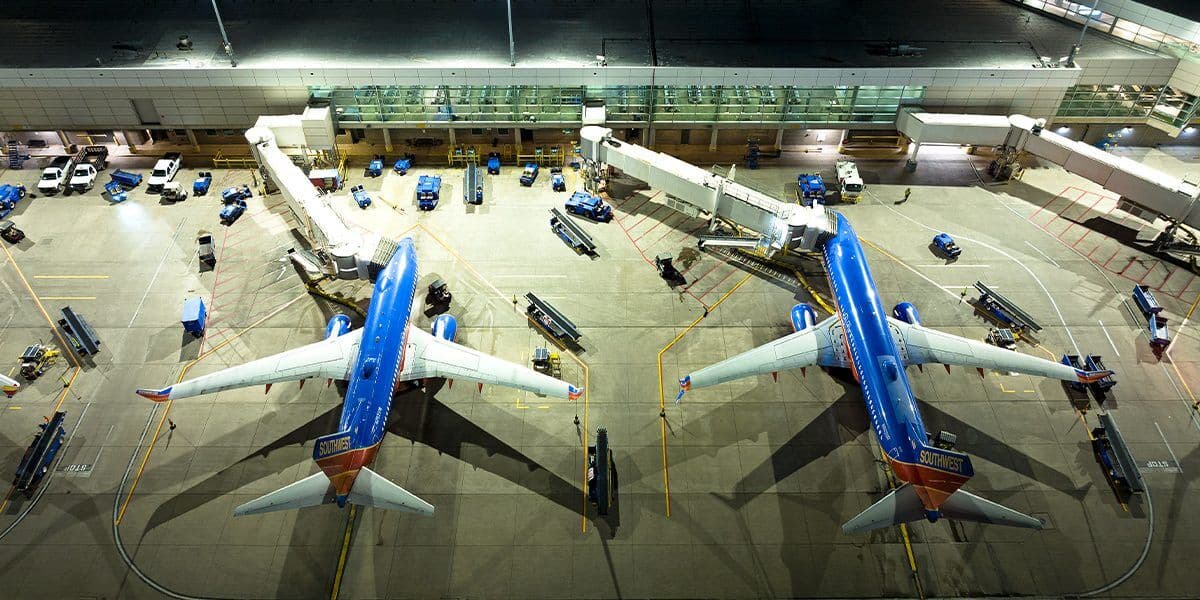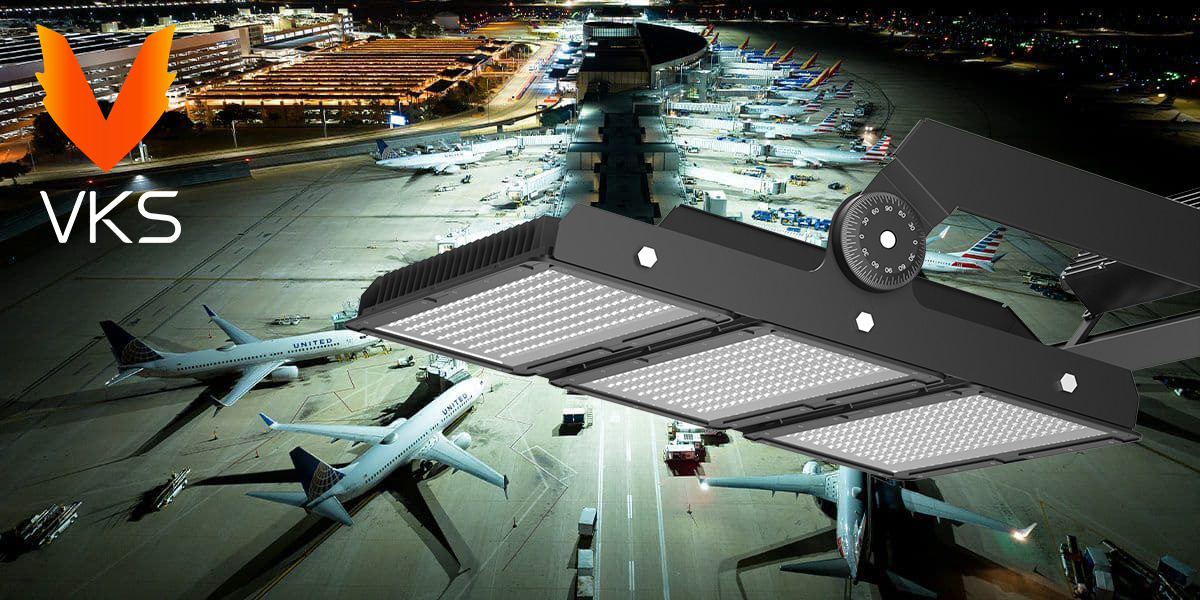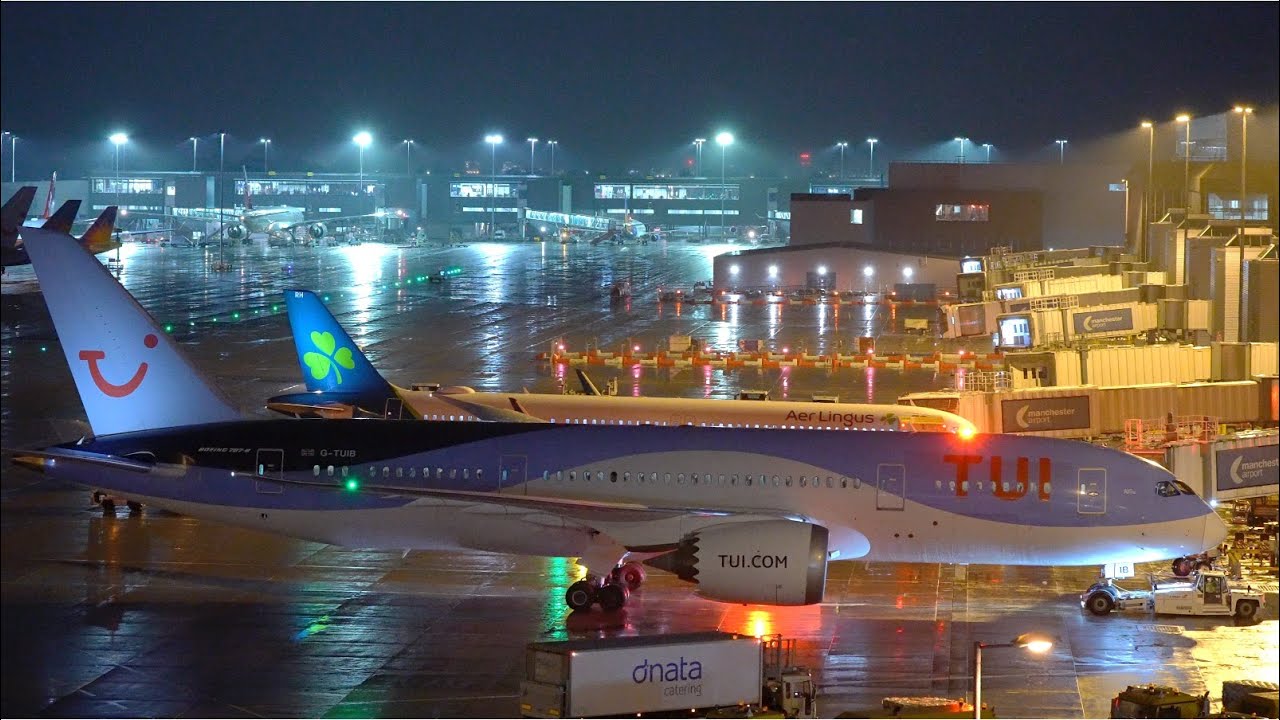From the beacons at each runway end to the floodlighting that lights each stand, there is a lot of light in commercial airports. Airport lighting is a crucial part of modern aviation. It influences everything from safety to security, and even the speed at which an aircraft can turn around.
Aviation lighting is a complicated subject that requires a thorough understanding of the rules, regulations and recommendations of various governing bodies. This post will focus on airport apron illumination, and we’ll answer some of the most frequently asked questions, as well as provide some useful recommendations for maximizing the effectiveness of any apron light solution.
What are the types of airport illumination?
Airport lighting can be broadly divided into two categories: those that are used while a plane in in motion and those that are used in the parking position.
The first group includes systems like:
Taxiway lights are used to indicate that an aircraft is on its way towards the runway after leaving the gate. Taxiway lights have a blue edge and a green centre line. The “stop bar” light is also red to stop aircraft from crossing runways in use.
Runway lights are used to guide aircraft during takeoff and land. The lights at the edge of the runway are predominantly white. The threshold (starting) and end light are respectively green and red.
In times of low visibility, approach lights help pilots to position their aircraft. White lights are mounted on masts and each mast operates in rapid succession. They are used to direct a pilot toward the runway by means of a “blinking white line”.
The second category, which is the lighting used while a plane is in rest, is mainly focused on apron illumination. Apron lighting refers to all lighting around aircraft stands and their surrounding areas.

Why is it important to have good lighting for your apron?
The apron is where almost all the action that an aircraft needs to run takes place. The apron is where passengers board and disembark the aircraft, while cargo, catering, and other crews load and unload the plane. The “round the clock” nature of modern airports makes it essential to have high-quality apron lights.
Quality of airport apron lights has a direct impact on:
Safety and security – aprons are often busy, with vehicles of all sizes operating close to the ground crew. A good lighting system can reduce the chances of an accident and ensure that unauthorised personnel are quickly spotted.
Operational efficiency – a poorly lit or dim apron makes it difficult for the ground staff to perform their duties effectively, increasing the risk of a delayed departure. The average cost per minute of an aircraft’s delay in 2019 was $75.
Passenger Experience: A well-lit apron gives passengers the feeling that their aircraft is safe. They can see the preparations for the aircraft up close.
Foreign Object Debris is anything that shouldn’t be in the apron, from luggage to catering trolleys and wildlife. FOD affects everything from plane safety to passenger comfort. Effective lighting is key in ensuring that FOD can be identified and removed as soon as possible.
What is the airport lighting regulation?
The International Civil Aviation Authority (ICAO), at the highest level of aviation lighting, publishes a set of recommendations. These recommendations are not mandatory. However, “Competent Authority” – typically a country’s Civil Aviation Authority (or Health & Safety Standards Agency) – will take these recommendations and turn them into legally binding requirements. Regulations are often specific to one country or region.
Although a Competent Authority may choose to exceed ICAO guidelines, the recommendations of this organization do give a useful indication as to the type of lighting that is required.
For example:
The ICAO recommends that at an aircraft stand a horizontal illuminance of 20lux with no more than 4:1 of the uniformity ratio, and a vertical illuminance (20 Lux) be provided in the relevant directions, 2m above the apron.
The ICAO recommends that in other apron zones, horizontal illumination should be 50 percent of average illuminance at the aircraft stands with a uniformity of no more than 4:1.
What types of lights can be used on an apron?
Apron are large outdoor spaces. To be effectively illuminated, they require high-powered floodlights. Airports, like many other industries, are turning to LED solutions for apron lighting and other aviation needs.
For some very specific reasons, LED lights are an excellent choice for aviation environments:
* LED lights provide an incredible amount of light, while using less energy than other alternatives.
* The lifespan of these lighting solutions is longer than older ones, so they require less frequent repairs and replacements.
* These can be switched on and off instantly, so they can be deactivated when not in use.
* The existing mast infrastructure can be retrofitted to install many LED airport lighting systems.
* LED floodlights are very durable if they meet the right manufacturing standards. They can provide high levels of protection from heat, cold and damp.
These factors combine to create an aviation lighting system that is more cost-effective, better for the planet, and adaptable to airport needs.

When deciding on an airport lighting solution, it’s important to consider not only what is needed now but also what will be most effective in the future. VKS Lighting will help you choose the best LED airport lighting for your needs.
Post time: Dec-01-2023







